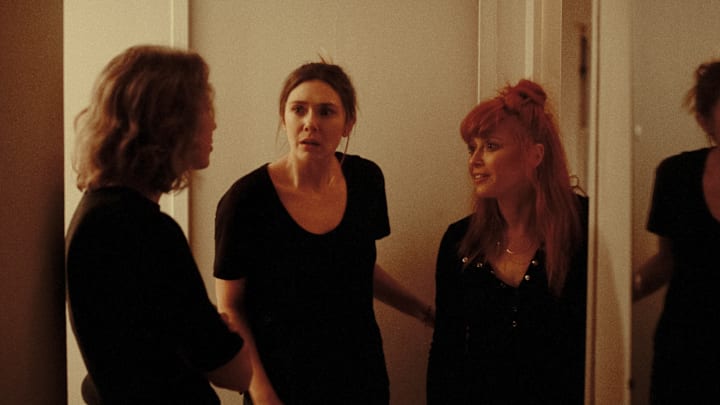There are movies where a single performance is so captivating that it’s powerful enough to carry a whole film. His Three Daughters (which screened last year at the Toronto International Film Festival and is now available on Netflix) has three of those.
Carrie Coon (playing Katie), Natasha Lyonne (playing Rachel), and Elizabeth Olsen (playing Christina) play the titular three daughters of Vincent (Jay O. Sanders) a man who is in the final stages of his battle with cancer. The three of them have gathered in his apartment that he shared with Rachel as they wait for him to pass.
The movie’s intentionally small structure (it takes place entirely within the apartment or the courtyard just outside) means that at least one of the three main characters is on screen at almost every moment. The three actors are tasked with carrying the movie which they do with incredible deftness.
The film is powered by its lead performances

While each performance is good enough to carry a movie on its own, together they are able to not only exist alongside each other, but they are elevating one another into something even greater than the sum of its parts.
We get to not only learn about each character through their actions and conversations with each other, but we’re able to learn just as much through the things that aren’t being said. The topics that are avoided, or touched on briefly before everyone moves away present a rich and complicated history between the three characters. It’s clear that the three characters have complicated relationships with one another, particularly Katie and Rachel.
The situation at hand forces the three of them to interact with one another, and as old wounds get picked at, we slowly get to uncover a picture that’s so much more complicated, and messy, and raw, and beautiful than anyone could see when looking in from the outside.
His Three Daughters avoids predictable beats
It would be so easy to box these characters into their roles of “the uptight one” (Katie), “the screwup” (Rachel), and “the peacemaker” (Christina). It’s clear that these titles don’t come close to doing the characters justice. There are moments where each character lashes out against the role that they’re expected to fill.
Even as they try to hold everything together, keeping themselves and their emotions in check, the messy moments still break through. But those are also the human moments that create such dynamic characters, and are the same moments that we get to see these three actresses bring to life such emotionally rich characters.
So much of the movie seems to revolve around the task of waiting. There are moments that hint of things going on outside of this small apartment. We hear one-sided conversations on the phone as the sisters talk to their families, hearing about what’s going on back home, and giving the update that nothing has really changed since the last time they spoke.
His Three Daughters is streaming on Netflix

But the movie itself doesn’t ever venture out past the waiting that is happening in the apartment. That waiting feels heavy, almost painful at times, but the movie sits in those moments. It adds weight to those moments, and makes them feel real, forcing us to stay with the characters during those times when there’s nothing to be done, but that nothing still has to be done.
There is a moment in the movie where the characters talk about how death is portrayed in movies and TV shows. It's a memorable scene (also an interesting one to include given the subject of the movie), and it serves to highlight what the movie is taking the time to portray. It’s a part of death that is seldom focused on in stories because it’s not the “dramatic” part.
By centering the whole movie around the moments of waiting, it highlights how important those moments really are in the process. It’s a touching film that hits the mark on virtually everything it’s trying to accomplish at every turn.
